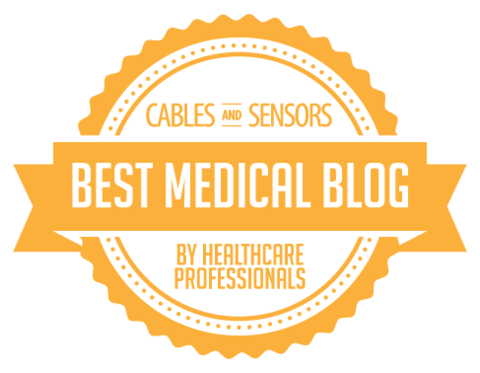Weight Loss – Do you need to change the way you think to lose weight?
It’s the New Year and there’s a good chance you’ve set a weight loss goal for your New Year’s resolution. By losing weight you’ll dramatically reduce your heart disease risk, lower blood pressure, and lower cholesterol. However, according to studies, the chances of you achieving your weight loss goal this year are slim.
I want to increase your chance of success, but it might require a mind shift! I have a couple issues I want you to explore your thoughts on.
1. Dieting
The first is whether or not you should make a mental shift around the whole “dieting” issue. Let’s focus on the word itself – “diet”. I want you to think about and explore your reaction and feelings when you hear the word “diet” and when you think about “going on a diet”. What comes to mind?
Examples would be feelings of restriction, thoughts of the short-term, such as I’ll do the South Beach Diet for two weeks to jump start my weight loss, another thought may be limits, and thought’s of what you can and can’t have once you start a diet. Of course, it’s possible you have a more positive reaction, such as hopeful and excited about the possibilities. My gut reaction is negative, which is probably why I can come up with a longer list of negatives for examples! I feel a tightening in my stomach when I think about “going on a diet”. I immediately have thoughts about the foods I can’t have, I feel restricted, and I think about when the diet will be over.
Have you considered another option to reach your weight loss or other health goals besides dieting? Here’s what I want you to consider now and in the days to come. Do you have to go on a diet to meet your goals? Instead, could you focus on healthy living and making healthy choices. Generally the word diet implies a short term approach and gives short term results. If you like statistics, statistics show 95% of people who lose weight on a diet gain it back. That’s not very encouraging. If you make a commitment to healthy living or healthy choices you shift to a long term mindset. A type of thinking that supports small changes over time that lead to permanent results.
Take some time and explore your reaction to the two statements:
“I’m making healthy choices.”
Versus
“I’m starting a diet.”
Which has a more positive feel for you?
If this isn’t something you’ve considered before, it’s simply a shift in thinking I’d like you explore. See if you need to adjust your mindset.
2. All or Nothing Approach
Okay, let’s move on to the second issue I want you to consider – Does if have to be an “All or Nothing Approach”?
Do you have to change all your bad habits at once to be successful?
For example, going on a raw food diet is probably a drastic change for most of us. (FYI – I’m in no way recommending a raw food diet, simply an example.) Is that the type of approach you need or would you be more successful targeting one or two not so healthy habits to change at a time? Once you’ve successful changed those habits, you move on to new ones.
“Strict diets” and “all or nothing approaches” generally fail. It is unrealistic to expect yourself to stick with a strict diet plan forever. Many people are gung ho at the beginning of a diet, after a week or two they start to slack off and “cheat” on the diet. Feelings of guilt and failure come in and thoughts of “well I’ve already blown today, I’ll start fresh tomorrow”, and then the gradual plummet back to old unhealthy habits.
So, I encourage you to consider a more open approach to achieving your health or weight loss goals. Does it have to be all or nothing?
Receive nutrition coaching from dietitian Lisa Nelson, as well as heart health and weight loss tips when you sign up for The Heart of Health. Subscribers receive the free bonus report “Stop Wasting Money – Take Control of Your Health”.
All the best,
Lisa Nelson RD
Customized Weight Loss Plan – Pick a weight loss plan and stick with it to lose weight!
The largest ever controlled trial of weight loss plans found when it comes to weight loss, the bottom line always comes down to calories.
The study was completed by researchers at Harvard and Pennington Biomedical Research Center in Louisiana. Researchers evaluated the results of four different diets providing different levels of fat, carbohydrates, and protein, including a diet similar to the low fat Ornish diet and high protein/low carb Atkins plan. The dieters were encouraged to reduce caloric intake 750 calorie, exercise 90 minutes/week, and keep a food journal.
Weight loss results ranged from a 50 pound loss to a 5 pound gain. The bottom line was reducing caloric intake and sticking with the weight loss plan. Whether the diet was low fat or high protein or whatever, did not have an have an influence.
So, if you want to lose weight you need to find a plan you can stick with for the long term. If you’ve been following my posts, you know I’m “pro” making healthy lifestyle changes and “anti” dieting. I’d love to help you by evaluating your current dietary habits and providing a customized weight loss plan you can move through step by step to achieve your weight loss goals. Learn more here – Customized Weight Loss Plan.
All the best,
Lisa Nelson RD
Top 5 Key Strategies to Lose Weight Permanently
Lower LDL Cholesterol Diet – Step 4
Let’s do a quick review. Step 1 of a diet to lower LDL cholesterol is to reduce saturated fat intake, step 2 increase soluble fiber, and step 3 increase plant sterol intake. The fourth step does not involve diet, but is an important part of maintaining a low LDL cholesterol level.
Here is the fourth of four options for lowering LDL cholesterol:
Physical Activity
Inactivity can cause higher cholesterol levels. Increase physical activity to increase HDL, lower LDL, and lower triglyceride levels. Check with your physician before starting an exercise program if you’re not currently active.
Lower LDL Cholesterol Diet – Step 1
Lower LDL Cholesterol Diet – Step 2
Lower LDL Cholesterol Diet – Step 3
Receive a step by step plan to promote heart health with a Mini Diet Makeover. As a special New Year’s bonus you’ll receive a complimentary copy of the Calorie Counter for Dummies. Learn more here – https://www.lisanelsonrd.com/minidietmakeover.html
All the best,
Lisa Nelson RD
How to Lower Cholesterol in 8 Simple Steps
Lower LDL Cholesterol Diet – Step 3
All right, in steps 1 and 2 we covered saturated fat to lower LDL cholesterol and increasing soluble fiber to lower LDL cholesterol. Now, let’s cover plant sterols.
Here is the third of four options for lower LDL cholesterol diet:
Plant Sterols
Eat plant sterols everyday. Eating 2 grams of plant sterols each day will on average reduce your LDL cholesterol 10%.
Plant sterols occur naturally in foods at low levels, so some foods have been fortified. Here is the amount of plant sterols in some foods:
Avocados, 1 small 0.13 grams
Corn Oil, 1 tablespoon 0.13 grams
Sunflower Seeds, 1/4 cup 0.19 grams
Oat Bar with plant sterols, 1 bar 0.4 grams
Orange Juice with plant sterols 1.0 gram
Vegetable oil spread with plant sterols, 1 tablespoon 1.0 gram
Benecol is also an option to boost plant sterol intake.
Lower LDL Cholesterol Diet – Step 4
All the best,
Lisa Nelson RD
How to Lower Cholesterol in 8 Simple Steps
Lower LDL Cholesterol Diet – Step 2
As we covered in Lower LDL Cholesterol Diet – Step 1, LDL (bad) cholesterol levels should be less than 130 mg/dl and ideally less than 100 mg/dl.
Here is the second of four options for lower LDL cholesterol diet:
Soluble Fiber
Increase dietary fiber, especially soluble fiber. Eat 25-35 grams of fiber daily and of this at least 15 grams should be soluble fiber. Research has shown that for every 1-2 grams of daily soluble fiber intake, LDL (bad) cholesterol is lowered 1%.
Sources of soluble fiber include:
Oat and oat bran
Legumes (dried beans and peas)
Nuts
Barley, rye
Flaxseed
Fruits (i.e. oranges, apples, prunes, plums, berries)
Vegetables (i.e. carrots, broccoli, potatoes, sweet potatoes, onions)
Psyllium husk
Learn more here about a high fiber diet plan to lower cholesterol here.
Lower LDL Cholesterol Diet – Step 3
All the best,
Lisa Nelson RD
How to Lower Cholesterol in 8 Simple Steps
Fat and Weight Loss – Do you need to eat fat to lose fat?
When it’s time to lose weight, many of us are trained to think “cut back on fat”. In a previous post – What’s the right amount of fat? – I discussed fat soluble vitamins, how much fat you should include in your daily diet, and some healthy fat sources. Now I want to cover one other important contribution fat makes when it comes to losing weight.
One of the beauties of fat is that it helps us to feel full. Fat is often referred to as the “satiety nutrient.” Have you ever eaten a meal that has been non fat or extremely low in fat? If so, then you might know what I mean. That meal typically doesn’t keep you satisfied for very long which leads to eating more food to get satisfaction. This can result in an overall higher calorie intake!
So for your weight loss efforts, it’s important to curb your appetite by including adequate fat sources with your meals and some snacks! Sixty grams of fat per day can add up quickly so you’ll want to make sure you’re making mindful choices.
Being careful you do not restrict your fat intake too low and include healthy fat sources in your diet everyday is just one of many factors that affect weight loss. To drastically increase your success with losing weight and keeping it off you must wade through all the weight loss information available and sort out what works from what doesn’t. Many methods used to lose weight are ineffective and some may even sabotage your weight loss efforts. Sign up for the FREE teleclass The 5 Biggest Dieting Myths Revealed to learn which weight loss strategies really work. Visit https://www.lisanelsonrd.com/newu/call.html to learn more today.
All the best,
Lisa Nelson RD
5 Biggest Dieting Myths Revealed



